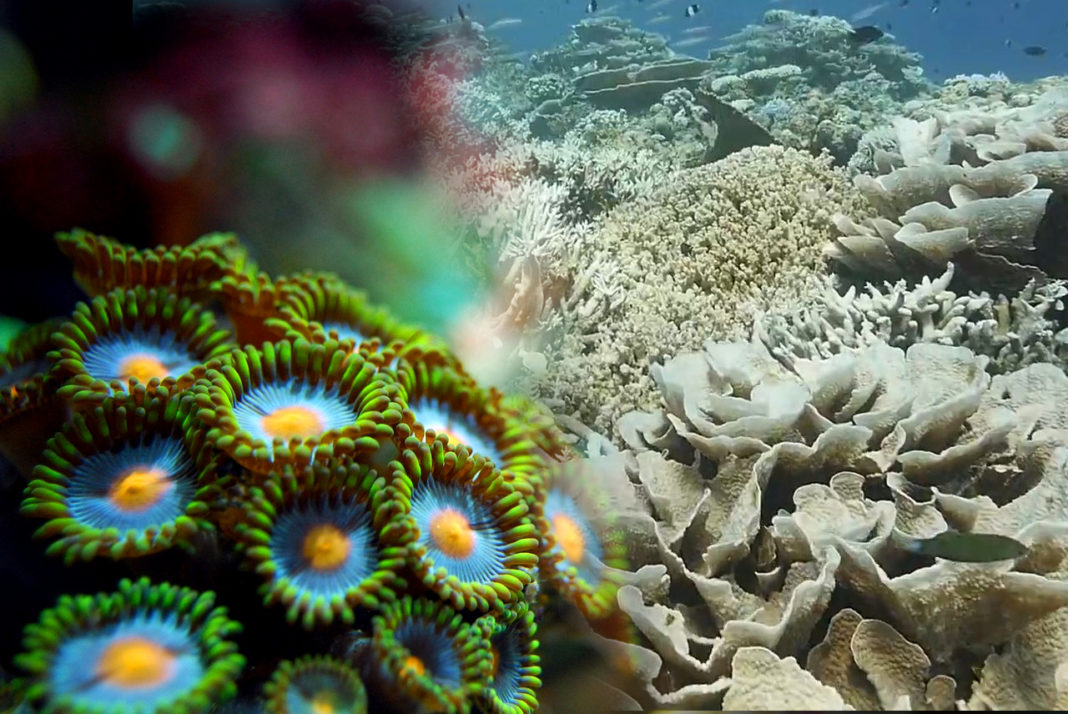Coral reefs are a vital part of marine ecosystems. They are breeding grounds for marine creatures; sustain many economies through fishing and tourism. Corals will also act as a storm break.
However coral reefs are undergoing degradation that is being caused by coral bleaching, diseasing, ocean acidification, and storm damage from typhoons and hurricanes.
At the moment, coral bleaching is the most significant and most widespread form of degradation.
What is coral bleaching?
Coral bleaching happens when corals expel symbiotic algae that live in them. They expel them after a change in temperature, light or nutrients happen. When the algae are expelled the corals turn completely white. The algae are known as zooxanthellae are expelled when the water is too warm. These algae are mostly responsible for the color of the reefs. Through photosynthesis, they make food –in form of sugars for their hosts.
When bleaching happens, it does not necessarily mean the coral is dead, but the corals undergo more stress that may result in mortality. In short, corals have survived a bleaching event.
Impacts of coral bleaching
In 2005 a massive bleaching event wiped half of the corals in the Caribbean. Satellite data picked damage from Northern Antilles near the Virgin Islands all the way to Puerto Rico.
Globally around 90% of the coral in Kenya, Tanzania, Sri Lanka, Seychelles, and the Maldives is at risk. Should the ocean temperature rise by a further 7ºF, the Great Barrier Reef will slowly cease to exist.
However not al bleaching is caused by warm water. In 2010, bleaching was observed in the Florida Keys after water temperatures fell. This particular bleaching resulted in coral deaths. Researchers have put forward a theory that cooler water temperatures make corals more prone to diseases. In this particular case, the temperatures were 12.06 degrees Fahrenheit lower than the norm at that time of the year.
How ocean acidification happens?
Ocean acidification occurs when carbon dioxide is absorbed by the ocean waters and in the ensuing reaction, an acid is produced. The degree of skeletal growth in corals reduces significantly with an increase in acidity of ocean waters. Moreover, some organism relocate resources as the acidity increases starving off the corals’ nutrients to necessary for skeletal growth.
Researchers are proposing the use of iron fertilizer to help re-engineer the ocean. This method stimulates photosynthesis in plankton which in turn mops up the excess carbon dioxide in the water. Dozens of experiments have shown iron fertilization increases photosynthesis by up to 30 times.
In conclusion, primarily it is human activities that are responsible for the rise of ocean temperatures. A lot of research is still ongoing to understand these phenomena. However, collectively we should reduce our carbon footprint. Communities living next to coral reefs need to be sensitized on the conservation of these coral reefs. This could be through planting mangroves and engaging in reef-friendly businesses like boating, marine tourism among others.
Credit: flickr.com/photos/stopadani/33764627036, commons.wikimedia.org/wiki/File:Bleached_colony_of_Acropora_coral.jpg

















